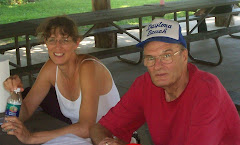Teachers "do" timelines in different ways. Some teachers don't consider it important enough to bother hanging on the wall. Some buy a pre-made timeline. Some have the students develop a timeline.
None of those worked for me on a regular basis. Occasionally I'd have the kids build a timeline. But after many attempts at keeping timelines, I settled on one simple plan. I made a bare-bones timeline. It was a pair. The timelines were about 5-7' long each, made of adding-machine tape or something similar, about 4-7" wide. One timeline covered the years 4000 BC to the present, with an inch (or 1.25") per century. The other zoomed in on the final 8% of the first timeline, covering the years 1500-2000, on a scale of 1.5" per decade.
Few events were listed on the timeline. On the full timeline, we listed creation, flood, Abraham, Moses, David, Israel's fall to Assyria, Judah's fall to Babylon, Jesus, fall of Rome, Columbus. On the more detailed, modern timeline, we included the Reformation, Pilgrims coming to Massachusetts, Revolutionary War, Civil War, Laura Ingalls, birth of great-grandparents, WWI, birth of grandparents, WWII, birth of parents, and birth of the kids. This was our skeletal framework. We might pencil in other events: the 7-Years War or the Wright Bros' airplane or Alexander the Great. Even when the timeline wasn't used to record events, it was essentially our map through time. We repeatedly go to the world map to get a feel for where something is happening, be it in a story or in current events. We used the timeline the same way: it was a framework to locate something in history. Because it was a simplistic timeline, it was easy to whip out a replacement when the current timeline was too worn or scribbled too full of additional events. We never had to be without our little map of time.
Wednesday, October 12, 2011
Subscribe to:
Post Comments (Atom)



No comments:
Post a Comment